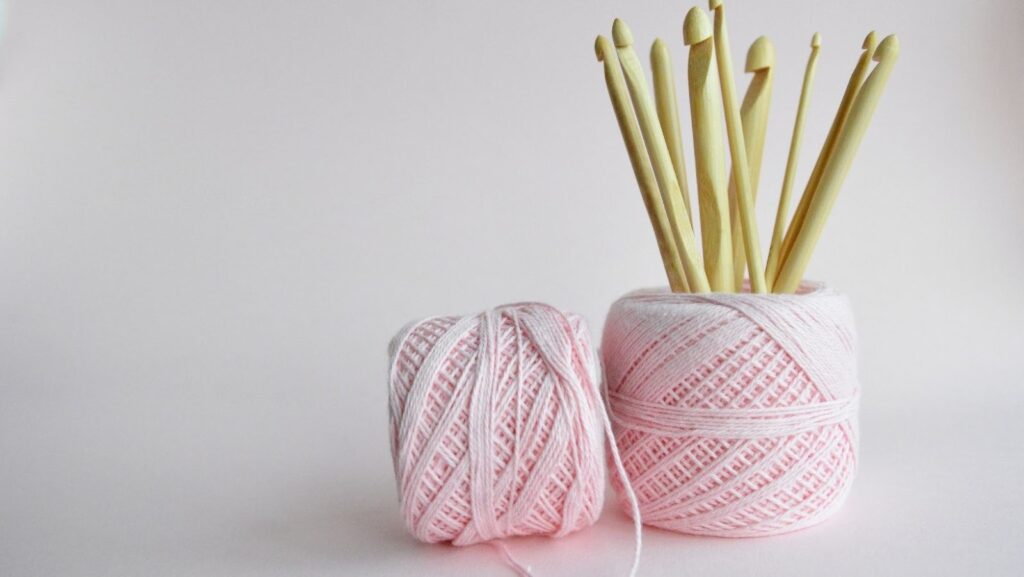As a seasoned crafter, I’ve often been asked, “Is knitting harder than crochet?” It’s a debate that’s been going on for ages and it’s not as black and white as it seems.
Key Differences Between Knitting and Crochet
Firstly, the tools vary: knitting makes use of two needles, crochet only requires one hook. This fundamental difference impacts how the yarn is manipulated. For knitters, the work involves handling two needles simultaneously, juggling multiple live stitches. In crochet, only one active stitch exists at any given time.
Secondly, the techniques diverge significantly. Knitting involves two basic stitches: the knit and the purl. Pretty much any knitting pattern comes from combinations of these two. Crochet, on the other hand, presents a greater variety of stitches – from single and double crochet to more complex patterns like the popcorn or cluster stitch.
Lastly, the ability to correct errors differs in both crafts. Knitters may face a bigger challenge when needing to undo their work, as multiple live stitches can unravel. On the contrary, I’ve seen that crocheting provides a bit more flexibility in correcting mistakes, as unraveling involves only one stitch at a time.
Is Knitting Harder Than Crochet
Knitting primarily uses two fundamental stitches: the knit stitch and the purl stitch. However, combinations of these basic stitches can create an array of patterns such as ribbing, cables, or lacework, giving knitters a wide arena for creativity.
Crochet, on the contrary, incorporates a larger variety of basic stitches – single crochet, double crochet, half-double crochet, and treble crochet, to list a few. Additionally, crochet stitches are founded on mathematical algorithms leading to intricate geometric patterns like hexagons, circles, or squares. This fact indeed bolsters the complexity criterion favoring crochet.
Another factor to consider is the number of active stitches. In knitting, several loops are kept ‘live’ on the needles at a given time, making it trickier to undo or rectify a mistake. Contrastingly, crochet generally only requires one active stitch at a time, simplifying the unpicking process if an error arises.
Finally, it’s worth exploring work-in-progress handling. Knitting involves working with two knitting needles, which can be an initial hurdle for beginners. On the other hand, crochet only requires one hook, potentially making it marginally easier to manage, especially for novices.
Personal Stories and Anecdotes
Reflecting on my own experience as a seasoned artisan, knitting and crocheting both possess their challenges. For instance, the depth of concentration required to manipulate a knitting needle through multiple live stitches makes knitting demanding at times. I recall knitting a Fair Isle sweater that required juggling multiple colors of yarn and keeping track of intricate stitch patterns.
In contrast, crocheting an Amigurumi toy, consisting of numerous geometric patterns, tested my patience and mathematical acumen. Cosmonauts, dragons, cacti – you name these animated forms, the crochet technique has created it! Crafting these shapes forced me to constantly monitor and count stitches, keeping active tally marks on a piece of paper next to me.
According to Ryan Mather, a renowned knitting expert quoted in Vogue Knitting, Every pattern was a new challenge, a new set of skills to learn. Similarly, Ana Morais Soares, a successful crochet designer, shared in a podcast interview with The Crochet Circle, “In crochet, there’s a vast variety of stitches, stitch combinations and techniques. Figuring them out felt like solving a puzzle.”
Expert Opinions
I’ve delved deep into the knitting versus crochet debate, and it’s clear that both have their unique challenges. Whether it’s the intricate stitch counting in crochet or the manipulation of live stitches in knitting, both crafts demand a high level of skill and patience. It’s not about which is harder, but rather about the joy we find in mastering these crafts. Both knitting and crochet offer endless opportunities for creativity, whether it’s through pattern combinations or geometric designs. After all, it’s the personal journey of learning and creating that truly matters.

